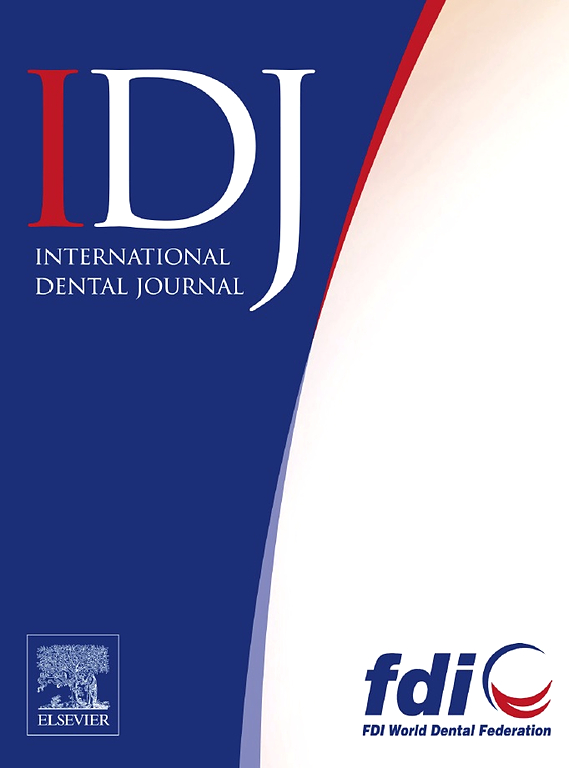龈卟啉单胞菌耐药序列的神经网络预测与分类
IF 3.2
3区 医学
Q1 DENTISTRY, ORAL SURGERY & MEDICINE
引用次数: 0
摘要
简介与目的牙龈卟啉单胞菌是一种与牙周病相关的关键病原体,与多种全身疾病相关。准确鉴定牙龈卟啉单胞菌蛋白对了解其致病性和制定有针对性的干预措施至关重要。牙龈卟啉单胞菌全基因组测序的最新进展加强了抗菌药物耐药性(AMR)决定因素的检测和分类,有助于早期识别耐药性趋势并改善患者护理。在这项研究中,我们开发了一种使用卷积神经网络(cnn)的深度学习方法,根据它们的氨基酸序列对牙龈卟啉卟啉蛋白进行分类。方法收集685个蛋白序列,包括150个牙龈卟啉单胞菌蛋白和535个非抗性变异,并将其分为训练集(60%)、验证集(20%)和测试集(20%)。通过填充750个氨基酸对序列进行预处理,并将其编码为特征矩阵。在PyTorch中设计并实现了一个CNN模型,该模型由两个卷积层、最大池化层、dropout层和用于二元分类的完全连接层组成,具有6192,258个参数。基于验证精度,使用Adam优化器对模型进行了30次提前停止的训练。结果CNN模型在龈裂牙AMR预测和分类方面优于BLAST、HMM Profiles和DeepSig等传统方法。假设的ProtBERT模型表现稍好,准确率为97%。评估了准确性、精密度、召回率、F1分数和曲线下面积等关键指标。CNN和ProtBERT具有较高的召回率(分别为0.93和0.95),表明它们在预测AMR分类方面是有效的。结论CNN模型对牙龈假单胞菌耐药蛋白序列的分类准确率为96.35%,曲线下面积为0.98,优于SOTA方法。临床相关性仅基于蛋白质序列的AMR的精确和快速预测,可能导致更早地识别耐药趋势和改善牙周治疗中的抗生素管理。本文章由计算机程序翻译,如有差异,请以英文原文为准。
Neural Networks for Predicting and Classifying Antimicrobial Resistance Sequences in Porphyromonas gingivalis
Introduction and objective
Porphyromonas gingivalis is a key pathogen associated with periodontal disease linked to various systemic conditions. Accurate identification of P. gingivalis proteins is essential for understanding its pathogenicity and developing targeted interventions. Recent advances in whole-genome sequencing of P. gingivalis have enhanced the detection and classification of antimicrobial resistance (AMR) determinants, aiding in the early identification of resistance trends and improving patient care. In this study, we developed a deep learning approach using convolutional neural networks (CNNs) to classify P. gingivalis proteins based on their amino acid sequences.
Methods
A dataset of 685 protein sequences, including 150 P. gingivalis proteins and 535 nonresistant variants, was compiled and split into training (60%), validation (20%), and test (20%) sets. The sequences were preprocessed by padding to 750 amino acids and one-hot encoded into a feature matrix. A CNN model, consisting of two convolutional layers, max pooling, dropout, and fully connected layers for binary classification, was designed and implemented in PyTorch with 6192,258 parameters. The model was trained using the Adam optimizer for 30 epochs with early stopping based on validation accuracy.
Results
The CNN model outperforms traditional methods like BLAST, HMM Profiles, and DeepSig in predicting and classifying AMR in P. gingivalis. The hypothetical ProtBERT model shows slightly better performance, with an accuracy of 97%. Key metrics like accuracy, precision, recall, F1 score, and the area under the curve were assessed. CNN and ProtBERT have high recall rates (0.93 and 0.95, respectively), indicating their effectiveness in predicting AMR classifications.
Conclusion
Our CNN model outperforms SOTA methods in classifying P. gingivalis-resistant protein sequences, achieving 96.35% accuracy and an area under the curve of 0.98.
Clinical relevance
Precise and rapid prediction of AMR based solely on protein sequences, potentially leading to earlier identification of resistance trends and improved antibiotic stewardship in periodontal treatment.
求助全文
通过发布文献求助,成功后即可免费获取论文全文。
去求助
来源期刊

International dental journal
医学-牙科与口腔外科
CiteScore
4.80
自引率
6.10%
发文量
159
审稿时长
63 days
期刊介绍:
The International Dental Journal features peer-reviewed, scientific articles relevant to international oral health issues, as well as practical, informative articles aimed at clinicians.
 求助内容:
求助内容: 应助结果提醒方式:
应助结果提醒方式:


